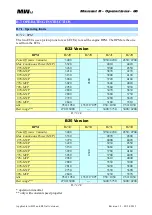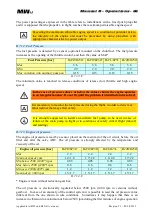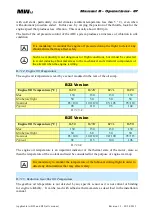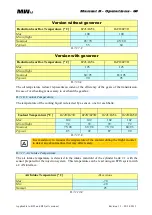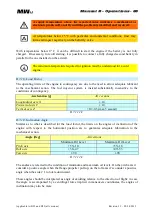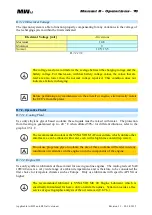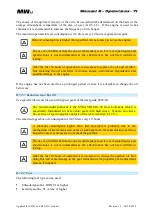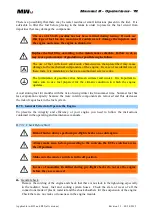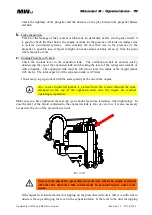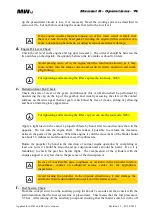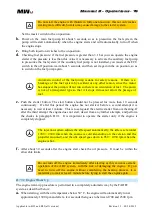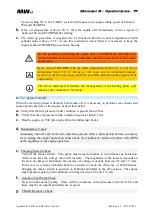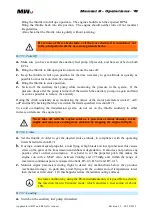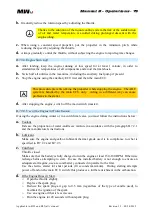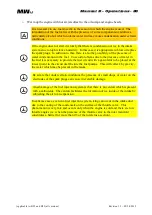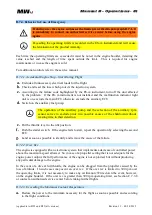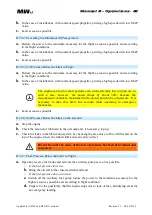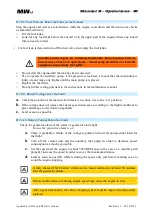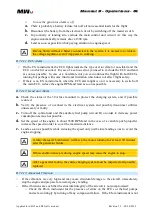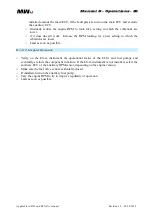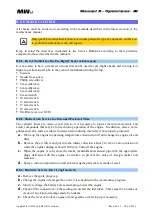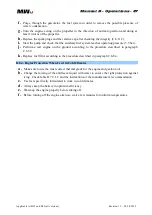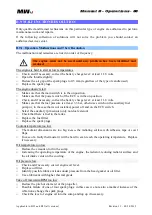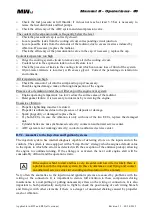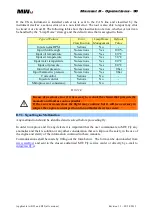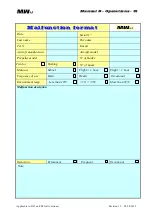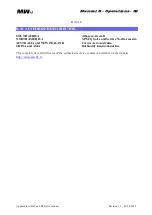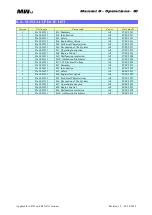
Applicable to: B22 and B25 (a ll versions)
Revision 1.3 – 02/24/ 2015
Manual B – Operations
-
78
Bring the throttle into full open position. The engine should reach the expected RPM.
Bring the throttle back into idle position. The engine should neither turn off nor manifest
irregularities.
Also check that the throttle runs regularly without jamming.
If even one of these checks fails, or if there are doubts, it is mandatory not
to fly, and perform all the necessary ground checks.
B.7.3.5. Take Off
a.
Make sure you have activated the auxiliary fuel pump (if present), and have switched on both
ECUs.
b.
Bring the throttle to full open position and execute the take off.
c.
Keep the throttle in full open position for the time necessary to gain altitude as quickly as
possible but not for more than five minutes.
d.
Bring the throttle to cruise position.
e.
Switch off the auxiliary fuel pump while monitoring the pressure in the system. If the
pressure drops after the pump is turned off then switch the auxiliary pump on again and land
as soon as possible to remove the anomaly.
During the climb constantly keep monitoring the values of the motor parameters (waterT, oilT,
oilP and fuelP) checking that they are within the limits specified in section B.7.1.
To avoid overloading the transmission system, do not act on the throttle suddenly to either
increase or decrease the engine rpm
.
Never take off with the engine cold, as it can cause serious damage to the
engine and may cause a dangerous situation by stopping the engine in flight.
B.7.3.6. Cruise
a.
Set the throttle in order to get the desired cruise attitude, in compliance with the operating
limits listed in Section B.7.1.
b.
If using a constant speed propeller, avoid flying at high loads and low rpm because this causes
stress on the gears of the transmission and enhances degradation. It also does not produce any
positive effect on fuel consumption. It is better to set the propeller pitch that makes the
engine run with a MAP value between 24inHg and 27.5inHg and within the range of
maximum continuous power expressed in charts B.5.4.3, B.5.4.9 and B.5.4.13.
c.
Monitor engine parameters during flight to detect any malfunctions before they produce
mechanical damage. In particular, avoid flying with the coolant and oil temperatures lower
than the lower limit value. If it this happens reduce the radiant cooling surfaces.
In cruise condition, by using the ES-m instrumentation, it is possible to activate
the injection map in Economy mode, which provides a fuel saving of about
10%.
B.7.3.7. Landing
a.
Switch on the auxiliary fuel pump if installed.


